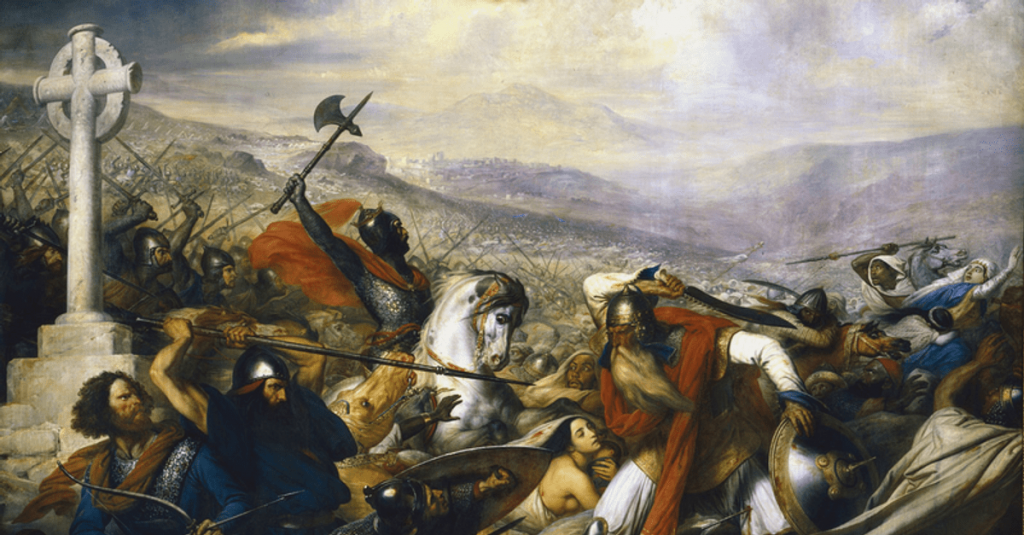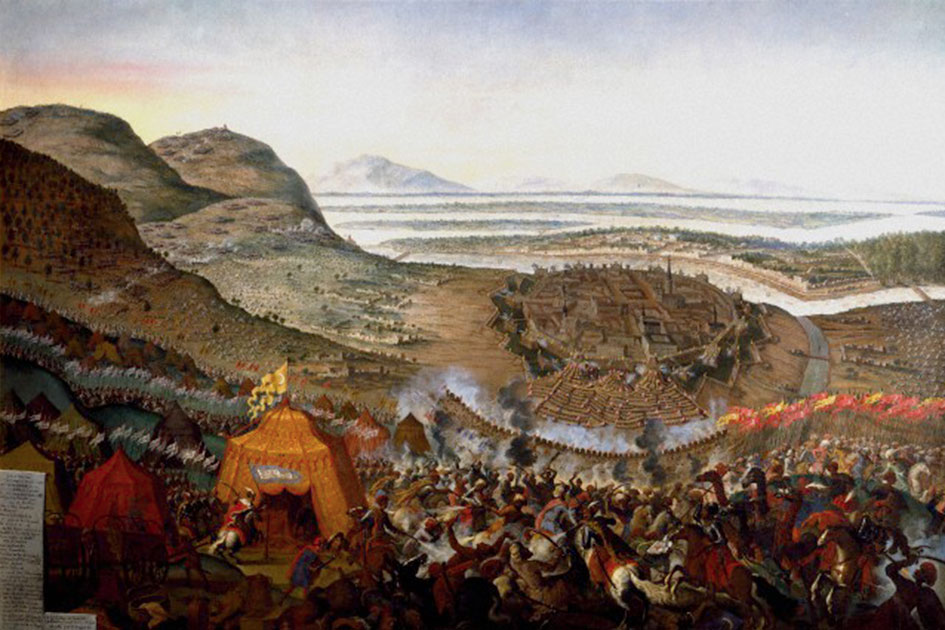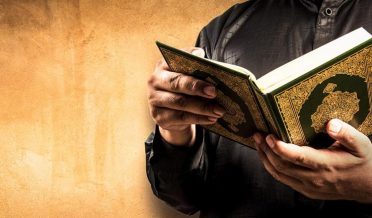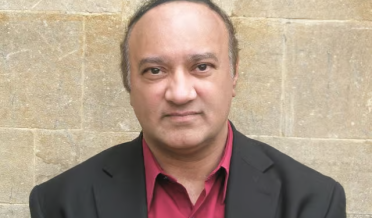
The term Muslim Europe is used for the predominantly Muslim countries of Europe, including Muslim-majority Turkey, Kosovo, Albania, Azerbaijan and Bosnia and Herzegovina; it is also used for the Muslim community in Europe (see Islam in Europe). Islam has had a historical stronghold in the Balkans since the Ottoman wars in Europe.
God’s words, as related by the angel to Muhammad (BUH) were eventually written down in verses that became the Koran. This holy book and the sayings of Muhammad (called the Sunna) formed the basis of the new religion, called Islam. In Arabic, Islam means “to submit” to God. (The Arabic word for “God” is Allah.)
Muhammad (BUH) did not attract much support in Mecca. In fact, his preaching against the corrupt practices of traders earned him many enemies in a city whose wealth depended on trade. Warned of an attempt on his life in 622, he fled to the town of Medina. Torn apart by political struggles, Medina had invited him to rule it. Muhammad (BUH) took control of the town and unified it under Islam. Local tribes flocked to convert to Islam. Within seven years, he led warriors back to Mecca and conquered it. By the time of his death, he had succeeded in unifying most of Arabia under Islam, personally leading about 20 military campaigns against pagan Arab tribes. Because Muhammad (BUH) held both religious and political authority, the Koran and Sunna did not just contain religious teachings. They also set down civil and criminal laws (collectively known as the Sharia).
From Arabia to Spain
After Muhammad (BUH) died in 632, he was succeeded by a leader called a caliph (meaning “successor”). The caliph was the political and religious leader but was not a prophet. The first caliph faced the daunting task of keeping all the Bedouin tribes under his control, but a war of “reconversion” succeeded. Then to keep the warrior Bedouins from fighting each other, subsequent caliphs launched military operations beyond Arabia. Over a period of about 30 years, Arab warriors, riding fast horses and camels, conquered the entire Persian empire and much of the Byzantine. The conquered lands included Egypt, Syria, Iran, Iraq, and much of Afghanistan and Baluchistan.
Arab warriors were filled with confidence that God destined them for victory. They believed that if they died in battle for God, they would become martyrs, rewarded for eternity in paradise. They did not fear death, which made them fierce fighters. Those Arab warriors who survived battle benefited from the loot, women, and slaves they captured. The caliph was always entitled to one-fifth of the spoils of war.
The people conquered by the Muslims usually faced a choice. They could denounce their religion and convert to Islam, pay a tax to continue practicing their beliefs, become a slave, or be executed. Most chose to convert. But many people paid the tax.

In time, the tax proved such a lucrative source of revenue that many Muslim rulers discouraged conversions. Those who paid the religious tax were called dhimmis. To Muslims, dhimmis were considered inferior and were treated as inferiors.
In 661, a civil war broke out over the succession of the caliph. The Umayyad family gained control of the growing Dar al-Islam, land of Islam. But this civil war marked a division within Islam that exists to this day. Many Muslims, known as Sunnis, believe that the Umayyads were the rightful successors to the caliphate. Shi’ite Muslims deny the legitimacy of the Umayyads.
The Umayyads ruled for nearly 100 years, during which the empire spread from the Middle East into Europe. Damascus in Syria served as the capital of their empire. In 670, the forces of the Umayyad caliph attacked Constantinople, in Asia Minor. It was the capital of the Christian Byzantine Empire. But after seven years of siege, the Muslims gave up their first attempt to take the city.
Meanwhile, Arab warriors swept across North Africa from Egypt to Morocco. They defeated the Byzantines and converted the Berber tribes (also known as Moors)
The Muslim governor of North Africa then planned to invade Christian Europe. In 711, a Muslim fleet landed on the Iberian Peninsula (the site of modern-day Spain and Portugal). The invaders met forces sent by Rodrigo, the Visigoth Christian king. Outnumbered, the Muslims still defeated King Rodrigo. The Arab and Berber cavalry went on to capture most of Iberia for Islam by 715.
Charles of the Franks
Following the collapse of the Roman Empire, Europe in the 700s was divided into numerous kingdoms and even smaller dukedoms that were almost always at war with each other. No unified nations existed. Most living in Europe were Christians, but some peoples still practiced pagan religions.
The Kingdom of the Franks, a loose confederation of dukedoms, occupied lands that would later become France and part of Germany. Power rested in the hands of the local dukes and their noblemen followers. They acknowledged a Frankish king, but he was little more than their puppet. The Franks had been converted to Christianity 200 years earlier. Charles was the illegitimate son of the Franks’ King Pippin II. When Pippin died in 714, his wife, Plectrude, imprisoned Charles to assure that her grandson, then a small child, would become king. But Charles soon escaped.
Plectrude came under attack by several dukedoms in the Frankish kingdom. Charles, however, raised a small fighting force to confront them. In his first battle, Charles was defeated. But this would be his last defeat. Plectrude bribed the invaders to cease their attack, but on their way home, Charles ambushed them and killed many.

Charles then went on the offensive and invaded his enemies’ territory. After winning several battles, he returned home to confront Plectrude. In 717, he installed his own puppet king and made himself “Mayor of the Palace,” the power behind the throne.
For the rest of his life, Charles was engaged in constant warfare throughout the Frankish kingdom. He assembled a formidable army of experienced fighters who received land from Charles in exchange for their loyalty. Charles went to war to take land, sometimes from churches and monasteries, which enabled him to increase his army.
The Battle of Tours
While Charles and the other Franks were fighting one another, the Muslims in Iberia were preparing to fight the Franks. In 721, they mounted raids across the Pyrenees Mountains into Aquitaine, the southernmost dukedom of the Franks. Duke Eudo of Aquitaine defeated the Muslims in one battle, but they continued their raids. The Muslim cavalry looted and burned churches, monasteries, and entire cities.
Aorund 732, the Muslim governor in Iberia, Abd ar-Rahman, led thousands of horsemen and their families into Aquitaine once again. They killed, burned, and looted as they went. After crushing Duke Eudo in battle, Abd ar-Rahman sacked the city of Bordeaux and burned the cathedral at Poitiers.
Duke Eudo, a longtime enemy of Charles, had to call upon him for help to stop the Muslim invaders. Charles responded quickly, and an epic battle soon took place near Tours. It is known as the Battle of Tours (also as the Battle of Poitiers) There are many uncertainties about this battle. We are not sure exactly where it took place, the length of it, the number of combatants, the tactics used, or even the year in which it occurred (732 or 733). But we do know that a major battle took place and the Franks led by Charles won.
The Battle of Tours was apparently a clash between Abd ar-Rahman’s cavalry and Charles’ infantry. The Muslim horsemen attacked numerous times with swords and spears against the Franks in square formations, fighting with battleaxes, spears, and massive broadswords.
Only a few accounts of the battle were written down at the time. A Frankish chronicle related that Charles “rushed in against them,” perhaps indicating that he also used cavalry. “With Christ’s help,” the chronicle says, “he overturned their tents, and hastened to battle to grind them small in slaughter.” The Muslims may have turned from battle to protect their families and loot-filled tents. In the confusion, Abd ar-Rahman was speared to death. Charles did not pursue the Muslims as they burned and plundered their way back to Iberia. The Battle of Tours came to be known in the West as the great battle that stopped the Muslim advance. To Muslims, it was a minor battle.
Muslim forces continued to mount raids north of the Pyrenees. These raids only ended after 740, when the Berbers revolted in Iberia and North Africa. Charles continued warring against his Frankish rivals, but with the added glory as the saviour of Christendom. Charles was later given the name Martel, meaning “The Hammer.” His grandson, Charles the Great (Charlemagne), finally unified most of Western Europe under his rule. The Muslims, however, remained in Iberia for another 700 years. Their influence on the country remains today. The Spanish language contains many words derived from Arabic, e.g., alcalde (mayor), (sugar), café (coffee), chisme (gossip), hasta (until), (corner), and cero (zero). Many Spanish buildings show the influence of Islamic architecture, which Spain brought to the New World and can be seen throughout Latin America and the Southwestern United States.
In 1492, the same year as Columbus’ voyage to the New World, Christians finally reconquered all of Spain. They expelled the Jews and Muslims who refused to convert to Christianity.
The Gates of Vienna
In 750, a new family, the Abbasids, took command of the Muslim Empire and established its capital in Baghdad. By 900, however, the empire had splintered into separate caliphates. But Muslim conquests continued. The Island of Sicily (off the Italian Peninsula) came under Muslim control for almost 300 years. Muslims also spread into India and further east.
In the 11th century, popes and kings in Europe launched a series of wars, known as the Crusades. Their goal was to retake Jerusalem and the surrounding Holy Land from Muslim control. The Crusaders finally did occupy the area and held it for almost 100 years. But the Muslims eventually expelled them. The Mongols from Central Asia captured Baghdad in 1258 and massacred its population. The Baghdad caliphate was gone. But a new Muslim power, the Ottoman Turks, arose in what is now modern Turkey. The Ottomans reignited the push into Europe. In 1452, the Ottoman ruler, Sultan Mahomet II, ordered another attempt to capture Constantinople, the capital of the Byzantine Empire. This time, the Muslims were successful. Within about 100 years, the Ottomans added Greece, Bulgaria, Serbia, Bosnia, Albania, Rumania, and Hungary to their empire.
In 1529 and again in 1566, the Ottoman Turks tried to capture Vienna, the capital of the Holy Roman Empire in the heart of Europe. Both assaults on the city failed. More than 100 years later, the Ottomans tried once more with 250,000 troops. The Ottomans decided to lay siege to Vienna and settled in a luxurious tent camp outside the city walls. In September 1683, the Polish military leader John Sobieski arrived with 60,000 Christian fighters. Just before going into battle, he spoke to his men. It is not a city alone that we must save, but the whole of Christianity, of which the city of Vienna is the bulwark. This war is a holy one. Sobieski and his cavalry charged the Ottoman camp, and the Muslim soldiers fled. The Ottomans’ dream of taking Europe collapsed in a rout before the gates of Vienna.
“The Sick Man of Europe”
After the Muslim defeat at Vienna, the Ottoman Empire gradually receded. The Ottoman sultans in Istanbul (old Constantinople) repeatedly tried to reform the army to defend against the Europeans, but conservatives in the government and army resisted changes. One after another, the European countries occupied by the Ottomans won their independence. In 1798, Napoleon Bonaparte conquered and for a short time ruled Egypt. This was the beginning of European imperialism in the Muslim world. The Russians moved southward into Central Asia, threatening Persia (later called Iran). The British took control of India and for a time occupied Afghanistan. The Dutch colonized Indonesia. The French imposed their colonial rule throughout North Africa. The British took over Egypt in 1882. Well before World War I, the Ottoman Empire was widely viewed as “the sick man of Europe.” After the war, the Ottoman Empire (which had allied with Germany) was divided up among the victorious European powers. The British occupied Iraq and Palestine. France took control of Syria.
In 1924, a young Turkish military leader overthrew the last of the Ottomans and established the modern nation of Turkey. Mustafa Kemal Ataturk broke with 1,300 years of Islamic history when he set up a secular government, one with the state separated from religion. The caliphs and sultans were gone.







